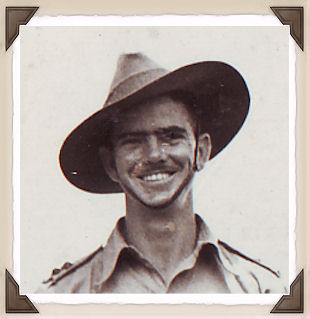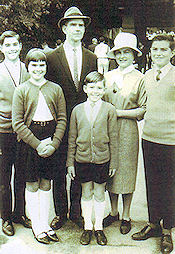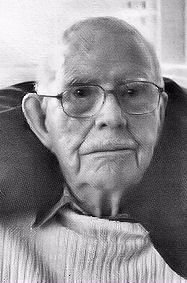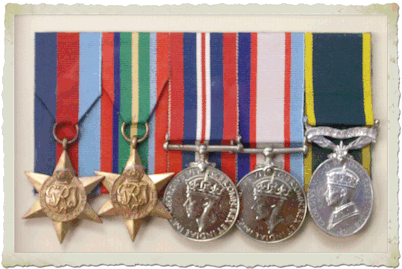Welcome
These pages are produced from the personal records of Robert Haslewood Savile KELSEY, recordings, conversations and family memories.
The information in the "Overview" section is sourced from the Australian War Memorial and other authoritative organisations.
Some pages have audio files embeded in them - please visit the Sitemap for more information
Robert Haslewood Savile KELSEY
Bob Kelsey was born in Bowen, Central Queensland on the 8th. November 1916. Bob descended from the great warriors of the Robertsons of Struan in Perthshire, Scotland - The Robertson clan, claims to be the oldest clan family in Scotland. The clan's first chief was Donnachaidh Reamhair (Stout Duncan) who fought with Bruce in the Scottish Wars of Independence.
Bob was born into poor circumstance and grew up in Bowen, Queensland, attended school there to high school, and completed Senior Certificate. Australia was still in the 'great depression' and Bob worked delivering telegrams for a solicitor. He subsequently gained a position in the Commonwealth Bank of Australia. Kelsey joined the local Militia (Q185256 - For some unknown reason his surmane was taken to be Savile-Kelsey and it took a long time and a statutory declaration for his record to be changed to just Kelsey on 3/6/1941.) and became a Sergeant, and then enlisted in the Australian Military Force, 31st. Battalion in September 1939, and was sent to Miowera Camp, south of Bowen, Official Number QX 6461. He trained with the 31st. Battalion until transferring to the 2/26th. Battalion at Grovely, Brisbane. Robert Kelsey attained the rank of Lieutenant (28/11/1940) and was later Second-in-Command of 'A' Company. Lt. Kelsey was offered the rank of Captain in Malaya, however he declined after self assessment, mostly due to his own opinion that he "lacked experience and was of immature age."
 |
 |
| 1939 - at age 23years, First Lieutenant Kelsey shows off his first "pip" at Miowera Camp, Bowen. | 1940 - Lieutenant Kelsey, Grovely Camp, Brisbane. |
The 2/26th. Battalion was part of the 27th. Brigade, 8th. Division, Australian Imperial Forces (A.I.F.) and was sent to defend Singapore Island and southern Malaya from the Japanese advance during 1941. They retreated before the Japanese forces from Malaya to Singapore before a surrender was signed on 15th. February 1942.
Bob along with 20,000 other Australians, a large number of British, Indian and civilian captives, plus a few Americans, became a Prisoner of War. He was forced to work for the Japanese in Singapore, on the Thai - Burma railway as part of 'F Force' and subsequently back in Singapore expanding the Changi aerodrome.
Following the liberation of Singapore and the 2/26th. at the end of the conflict, the Battalion's return to Australia was a fragmented event, as troops came home from a variety of locations and by a variety of methods. Bob, along with the main body of the 2/26th., 470 men, returned to Australia aboard the ship 'Largs Bay', berthing at Pinkenba Wharf in Brisbane on 7th. October 1945.
Mr. Bob Kelsey went back to work with the Commonwealth Bank, married his devoted wife, Joan in 1949 and together they had four children. In the mid 1950s Bob joined the CMF, Intelligence Corp, with the rank of Captain, a promotion so often promised but never given during the retreat in Malaya and across Singapore Island.
After a term of employment with the Commonwealth Bank, Bob was offered a position with the Reserve Bank of Australia which he took up. In his late 50's he was approached by Judge Mark Hoare (Major Mark Hoare had been Bob's CO of 'A' Company) and so became a Judge's Associate in Queensland.
 |
 |
 |
 |
Bob was an outdoors man loving family hiking, camping and bird watching. However he never missed an opportunity to set the records straight about the Japs and their bestial and cruel treatment of PoW's in Singapore and Thailand.
Robert Haslewood Savile Kelsey passed into eternal life on 1st. June 2011.
Please browse these pages - this is "Bob's Story"......
 |
We are proud to advise that this site was nominated by the Australian War Memorial and has been electronically archived by the Australian National Library's PANDORA (Preserving and Accessing Networked Documentary Resources of Australia) project as "an online publication of national significance". |

